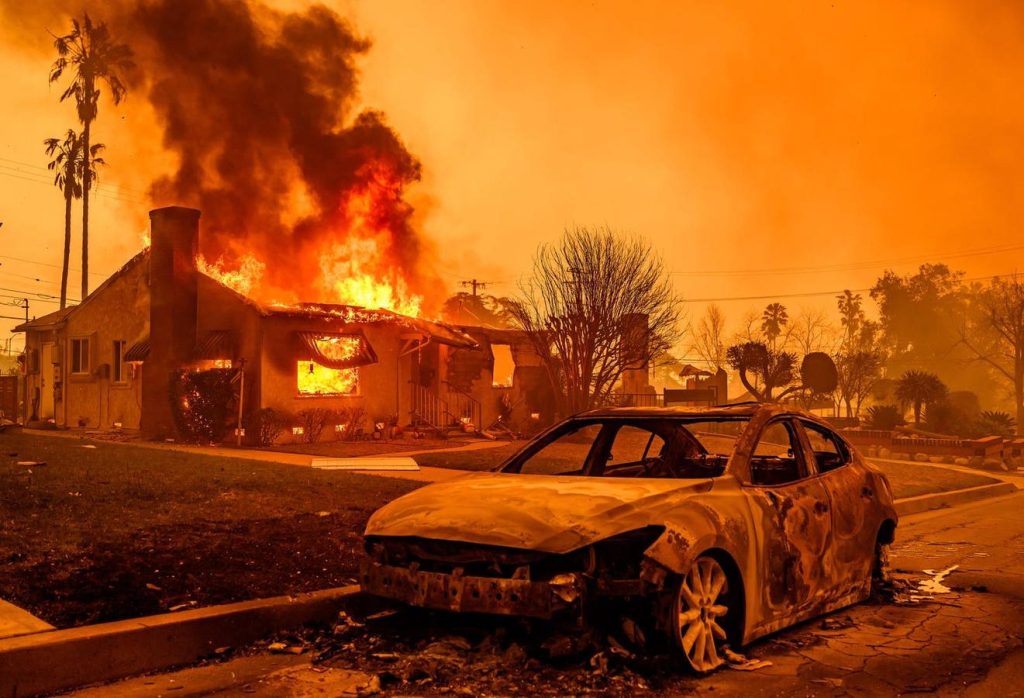The Growing Wildfire Threat and the Importance of Insurance
The devastating wildfires ravaging California serve as a stark reminder of the escalating risks posed by climate change, prolonged droughts, and the expansion of residential areas into fire-prone territories. As these natural disasters increase in both frequency and intensity, safeguarding one’s property and financial well-being becomes paramount. A comprehensive understanding of available insurance options, potential coverage gaps, and proactive mitigation strategies is crucial for homeowners and renters alike. This detailed examination explores the various insurance types relevant to wildfire protection, common policy exclusions and limitations, and proactive steps individuals can take to ensure adequate coverage.
Navigating the Landscape of Wildfire Insurance Coverage
Several insurance options can provide coverage against wildfire damage, each tailored to specific circumstances. Homeowners insurance typically covers the structure of the home, attached structures, and personal belongings against fire damage, and may include additional living expenses if the home becomes uninhabitable. Renters insurance protects tenants’ personal property and can also cover temporary living expenses. Condo insurance, or HO6 policies, covers the interior of the unit, personal belongings, and may include loss assessment coverage for shared spaces. Landlord insurance, often in the form of a dwelling fire policy, protects the physical structure of the rental property and may cover lost rental income. For those in high-risk areas, specialized wildfire insurance offers extended dwelling coverage, debris removal coverage, and protection for landscaping, addressing gaps left by standard policies. Finally, state and government programs, like California’s FAIR Plan, serve as a safety net for those unable to secure private insurance, offering basic fire protection, though often requiring supplemental coverage for comprehensive protection.
Understanding the Limitations and Gaps in Wildfire Insurance
While insurance offers crucial protection, understanding potential exclusions and limitations is essential. Policies often exclude damages resulting from homeowner negligence, such as failing to maintain defensible space around the property. Coverage limits can also pose a challenge, especially with rising construction costs. Outdated limits may leave homeowners with substantial out-of-pocket expenses after a fire. Further complicating matters, homeowners in high-risk areas may face policy denials, cancellations, or non-renewals due to the increased wildfire threat. These challenges underscore the need for proactive measures to secure and maintain adequate coverage.
Proactive Steps to Ensure Comprehensive Wildfire Protection
Taking proactive steps can significantly enhance wildfire protection and ensure adequate coverage. Regular policy reviews, preferably annually, are essential to adjust coverage limits to reflect current rebuilding costs and to address any home improvements or additions. Increasing coverage limits for dwelling and personal belongings, potentially with extended replacement cost coverage, can provide greater financial security. Adding wildfire-specific endorsements or riders can further enhance protection, covering expenses like debris removal and landscaping restoration. Maintaining a detailed home inventory, including photographs, videos, and receipts, streamlines the claims process. Implementing wildfire-resistant property improvements, such as fire-resistant roofing and creating defensible space, not only reduces risk but may also qualify for insurance discounts. Bundling insurance policies can further lower costs and simplify management. Finally, consulting with an insurance professional can provide invaluable guidance on policy options, coverage gaps, and wildfire mitigation strategies.
The Crucial Role of Mitigation and Preparedness
Beyond insurance, active wildfire mitigation plays a crucial role in protecting properties. Creating and maintaining defensible space around the home is paramount. This involves removing flammable vegetation, trimming overhanging branches, and clearing debris within a designated zone around the structure. Using fire-resistant building materials, such as non-combustible roofing and ember-resistant vents, can significantly reduce the risk of ignition. Regularly cleaning gutters and roofs of debris, especially dry leaves and pine needles, further minimizes fire hazards. Homeowners should also develop and practice a wildfire evacuation plan, ensuring all family members understand the procedures and have designated meeting points. Having an emergency kit readily available, containing essential supplies, is crucial for a swift and safe evacuation.
The Importance of Community-Level Action and Collaboration
Wildfire preparedness extends beyond individual properties and requires community-level action. Neighborhood associations and local governments can play a vital role in promoting fire-safe practices, organizing community clean-up events, and providing resources and education to residents. Collaborating with fire departments on community wildfire protection plans can enhance preparedness and response capabilities. Regularly scheduled community drills and exercises can help residents practice evacuation procedures and improve coordination with emergency services. Sharing information and resources within the community, such as best practices for creating defensible space and maintaining fire-resistant landscaping, can further empower residents to take proactive steps to protect their homes and neighborhoods. Working together, communities can create a more resilient environment and minimize the devastating impacts of wildfires.
Conclusion: A Proactive Approach to Wildfire Protection
The increasing threat of wildfires necessitates a proactive and multifaceted approach to protection. Securing adequate insurance coverage, understanding policy limitations, and implementing robust mitigation measures are essential for safeguarding homes, properties, and financial well-being. Regular policy reviews, staying informed about evolving risks, and actively engaging in community-level preparedness are crucial components of a comprehensive wildfire protection strategy. By taking these proactive steps, individuals and communities can enhance their resilience and minimize the devastating impact of wildfires.

